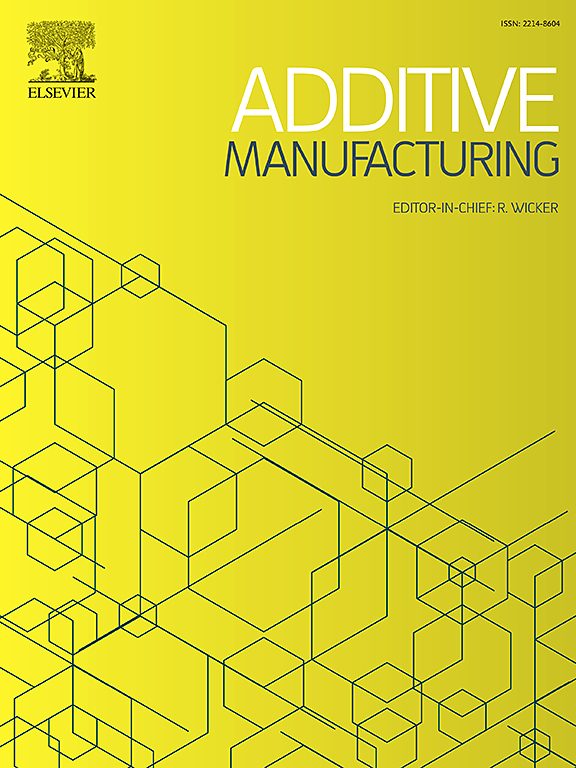Vat photopolymerization of zirconia suspensions continuously blended by in-line static mixing for strength-gradient zirconia
IF 10.3
1区 工程技术
Q1 ENGINEERING, MANUFACTURING
引用次数: 0
Abstract
Vat photopolymerization (VP) of ceramics has demonstrated great promises for manufacturing dental crowns made of partially stabilized zirconia (PSZ) ceramics with excellent dimensional accuracy, outstanding mechanical properties, and good esthetics. However, close mimicking of gradually changing optical translucency of natural teeth still remains challenging. We herein propose functionally graded (FG)-digital light processing (DLP) for manufacturing PSZ objects with gradually varying compositions and mechanical/optical properties using an in-line static mixing system. In this study, 4 mol% and 5 mol% yttria (Y2O3) PSZ, denoted as “4Y-PSZ and 5Y-PSZ”, respectively, were employed as models due to their different mechanical strengths and optical transmittances. Predetermined amounts of 4Y-PSZ and 5Y-PSZ suspensions were fed individually into an in-line static mixer using computer-controlled extrusion systems. This FG-DLP process enabled construction of five gradients with varying 4Y-PSZ/5Y-PSZ compositions (5Y-PSZ content = 0 vol%, 25 vol%, 50 vol%, 75 vol%, and 100 vol%). For uniform blending, as-received 4Y-PSZ and 5Y-PSZ granules were calcined at 1000 °C for 1 h and then crushed into fine particles by ball-milling. In addition, UV curing time for different gradients were optimized individually due to different photopolymerization behaviors of 4Y-PSZ and 5Y-PSZ suspensions. After sintering at 1500 °C for 2 h, all gradients were almost fully densified and strongly bonded together. When the content of 5Y-PSZ increased from 0 vol% to 100 vol%, flexural strength decreased from 865 ± 80 MPa to 613 ± 56 MPa and optical % transmittance increased remarkably from 24.1 ± 0.4 % to 31.9 ± 0.3 %.
求助全文
约1分钟内获得全文
求助全文
来源期刊

Additive manufacturing
Materials Science-General Materials Science
CiteScore
19.80
自引率
12.70%
发文量
648
审稿时长
35 days
期刊介绍:
Additive Manufacturing stands as a peer-reviewed journal dedicated to delivering high-quality research papers and reviews in the field of additive manufacturing, serving both academia and industry leaders. The journal's objective is to recognize the innovative essence of additive manufacturing and its diverse applications, providing a comprehensive overview of current developments and future prospects.
The transformative potential of additive manufacturing technologies in product design and manufacturing is poised to disrupt traditional approaches. In response to this paradigm shift, a distinctive and comprehensive publication outlet was essential. Additive Manufacturing fulfills this need, offering a platform for engineers, materials scientists, and practitioners across academia and various industries to document and share innovations in these evolving technologies.
 求助内容:
求助内容: 应助结果提醒方式:
应助结果提醒方式:


